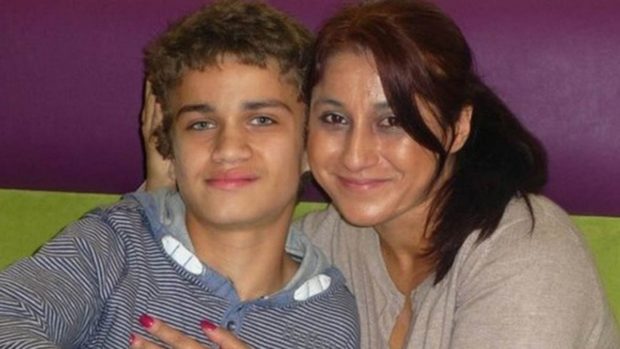
When Nadine Montgomery’s son Sam emerged seriously injured from a traumatic birth, she vowed to fight to find out exactly what went wrong – and to get justice for him.
Fifteen years later Nadine won a landmark victory and substantial damages for Sam. But, for Nadine, her victory in 2015 was far from the end of her journey. Instead she has gone on to graduate in law, and is studying for a masters in informed consent, the issue at the centre of her legal battle.
And she has become a leading campaigner on the subject, addressing medical conferences and making an educational video for the NHS, to help medical staff and other patients.
Meanwhile Sam, now 21, has defied doctors’ expectations, doing well at school with excellent Higher results and is now studying software engineering at Strathclyde University.
Sam’s case changed the law in Informed Consent, making it vital for doctors to give patients information on the risks and benefits of treatment and alternatives.
But Nadine, 45, who is diabetic, believes there is still more to be done. She said: “Studying law at Strathclyde University seemed a natural conclusion to this battle. I have a real need to ensure others do not go through what I did, and that the right discussions between doctor and patient should take place.
“Patients need to be involved in decision-making.”
She explained how, while she knew her diabetes might make giving birth more difficult, she was not made aware of all the risks and that she could, if she wished, have had a Caesarian section.
During the birth Sam became stuck, causing a 12-minute delay in delivering his head and shoulders. The resulting lack of oxygen caused cerebral palsy and nerve damage resulted in paralysis of the arm.
She said: “When we first wrote to the hospital detailing the errors in Sam’s delivery, I had scanned through guidance that should have been followed by obstetricians in delivering babies of diabetic mothers.
“I trawled General Medical Council reports and every possible point of reference to support my complaint. However, all I received was a letter saying they were very sorry but they made no errors in my care.
“Speaking to our solicitor, I thought we had enough evidence to see justice done quickly but the next few years were long, and sometimes a painful learning curve.”
Her damages claim was rejected on two occasions at the Court of Session in Edinburgh. Then judges at the Supreme Court in London upheld her major damages claim against NHS Lanarkshire.
“Sam’s case changed the law in the UK and also set the ethical guidance for doctors as stated by the GMC with regard to informed consent. Doctors now have a duty to take reasonable care to ensure patients are aware of any material risks in recommended treatment and any reasonable alternative.
“It was a huge relief and justice for Sam and, indeed, any others who had been injured by a lack of informed consent.”
In addition to cerebral palsy and paralysis of his arm, Sam consequently suffered damage to motor and other skills.
Nadine was told when he was three months old that he would never walk, would have marked disabilities and would certainly not live a normal life. “His paediatric team painted a bleak future with milestones he would never reach,” she said.
“I knew he would face years of struggle. We needed answers to what had happened and whether it could have been predicted and prevented. It must never happen to any other patient again.
“I was heartbroken for Sam but hugely supported by my parents and sister. Mum and dad were doctors and knew exactly what could lie ahead and, looking back, they must have felt devastated for Sam and me.”
Nadine sought advice from solicitors and began a 15-year battle through the courts, finally winning £5.25 million in compensation. She said: “The years through the courts fired in me an ambition to study law.
“I was accepted for the post-graduate law degree at Strathclyde, graduated and am pursuing the issue of Informed Consent with my post-graduate studies.
“It was justice for Sam and, indeed, any others who have been injured by a lack of informed consent.”
While she was driving Sam’s case through the courts, Nadine was also pushing for every possible opportunity at his school.
Teachers who wrote him off as a child with little ability were dismissed as Nadine refused to accept anything less than a good education for her son. “I was told I was an over-ambitious mum with unrealistic hopes and ambitions for my son, but I was not going to accept this,” she said.
“He may be dependent on others and struggle to walk or hold a book properly, so I sat every day for hours reading books and teaching him everything I knew.”
That dedication paid off when Sam passed five Highers with excellent grades and earned a place at university.

Enjoy the convenience of having The Sunday Post delivered as a digital ePaper straight to your smartphone, tablet or computer.
Subscribe for only £5.49 a month and enjoy all the benefits of the printed paper as a digital replica.
Subscribe